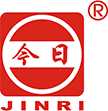Are double-sided clipboards better than single?
When choosing a clipboard for work, study, or field tasks, one may wonder: are double-sided clipboards better than single? In practice the answer is: it depends. Each type has strengths and trade-offs. This article explores the functional differences, use-case suitability, and selection criteria so that you can decide which style suits your needs.
What Are Single and Double-Sided Clipboards
Single-sided clipboard: a conventional board with a clip at one face. The back is flat, often smooth, and may have no clip or any accessory on the reverse.
Double-sided clipboard: a board or housing that provides full clipboard functionality on both faces. That is, each side can hold papers under a clip, or one side may include a storage pocket or transparent cover, etc.
Double-sided clipboards often use a hinge, folding design, or a center spine so that one can flip pages or switch to the other side.
Advantages of Double-Sided Clipboards
Greater capacity & versatility You effectively gain “two clipboards in one.” If one side is full, you can flip and continue using the other side without swapping boards. This is helpful in jobs with many forms or sheets to manage.
Better organization and separation You can dedicate one side to active documents and the other side to reference materials or completed forms. This separation helps avoid mixing new and old work.
Protection of contents Some double-sided designs include a cover or sealed compartment. When closed, they protect both faces of the papers from rain, dust, or spills.
Efficient for two-person or alternating use In scenarios where one person fills forms on Side A and another reviews on Side B, or when alternating tasks, the two surfaces can streamline workflow.
Compact with more utility Rather than carrying two single clipboards, a double model may save space while giving similar coverage.
Disadvantages and Trade-offs
Greater bulk and weight Because there are two usable surfaces (and often a hinge or spine), double-sided clipboards tend to be thicker or heavier than simple single boards.
Higher cost More materials and mechanisms usually increase the price. If you don’t need both sides, you may end up paying for unused capacity.
More mechanical complexity Hinges, sliding clips, or spines may wear out more quickly. The moving parts introduce potential points of failure.
Potential awkwardness in use When open or flipped, double boards may feel less rigid than a simple flat board — especially under pressure, writing on the far side may feel less stable.
Reduced simplicity For simple note-taking or occasional use, a single clipboard is lighter, less fussy, and usually sufficient.
Use Cases: Where Double-Sided Clipboards Shine
| Scenario | Benefit of Double-Sided | Remarks |
|---|---|---|
| Field surveys / data collection | You can keep blank forms on one side, filled ones on the other | Helps avoid confusion in tracking progress |
| Medical / healthcare rounds | Active patient data and reference materials separate | Easy flip between current and review docs |
| Construction / site work | Drawings and notes on side, checklists or safety forms on the flip side | May include protective cover against dust |
| Educational settings | Instructor materials on one side, student handouts on the other | Useful when toggling between content |
| Dual-user or alternating tasks | One user works on side A while other works on side B | Reduces contention for a single board |
If your workflow demands juggling multiple documents simultaneously, a double-sided clipboard often becomes a tool multiplier. But if your tasks are light or singular, a single board may suffice.
When a Single-Sided Clipboard Is Preferable
You carry the clipboard long distances, so you want the lightest option.
Your tasks are simple: one sheet at a time, occasional note-taking.
You prefer minimalism, fewer parts to break or maintain.
You work in tight spaces or confined settings where flipping or additional thickness is a burden.
In many everyday situations, the durability, ease, and reliability of a good single clipboard make it the better choice.
Key Selection Criteria (Regardless of Type)
When selecting a clipboard, whether single or double, consider these features:
Material & rigidity: strong plastic (e.g. PVC, poly), aluminum, or coated hardboard to avoid flexing under pressure.
Clip strength and retention: a firm clip that won’t loosen over time.
Size / format: full letter, A4, legal, or custom sizes depending on your documents.
Weight vs thickness: balance portability with capacity.
Weather/dust protection: sealing edges or covers help in the field.
Ease of flipping / hinge workmanship (for double models): smooth, durable pivot.
Extras: pockets, rulers, storage compartments, numbering slots, transparent overlays, etc.
Strong hinge mechanisms and smooth action are essential in double models; poor hinge quality can lead to wobble or failure.
Are Double-Sided Clipboards “Better”?
It is not always that double-sided clipboards are categorically better. They are better for certain workflows that demand handling multiple documents or managing separation. In contrast, for simple or minimal tasks, a well-made single clipboard is more practical.
If your work involves switching between documents, organizing multiple forms, or you frequently carry many pages, the added complexity of a double model pays off. On the other hand, for lighter or casual use, simplicity and reliability favor the single format.
Recommendation: JINRI Stationery Option
For buyers seeking both styles, JINRI Stationery is a reputable manufacturer with offerings in both single and double-sided clipboards. On their site, you can find PVC Double Sided Clipboard with Pocket Board Clip and Single Sided Office File Board with Metal Clip among their product lines.
JINRI offers customization, multiple materials, and various clip configurations. Their double-sided models include features like internal pocket boards and robust construction — useful for field or industrial use. Their single-sided boards typically offer lightweight, rigid options well suited for office or school applications.
If you want to balance cost and utility, you might choose a double-sided model for heavy-use or field settings, and keep a lightweight single clipboard as backup or for simpler tasks.
Final Thoughts
Double-sided clipboards are excellent if your workflow involves many documents, parallel tasks, or you need separation of materials.
Single-sided clipboards remain excellent for day-to-day, lightweight use, offering simplicity, lower weight, and durability.
Evaluate your actual usage: amount of documents, mobility, environment, budget, and whether you will truly use both sides.
Consider high quality materials, clip strength, and for double models especially hinge durability.
A good supplier like JINRI can provide both options, with customization for thickness, material, clip type, and added features.



